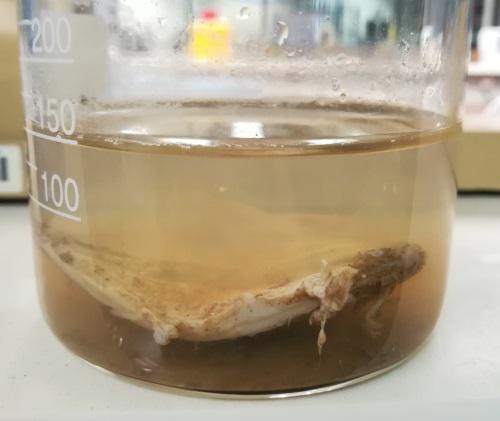Arantxa Blecher
The overall aim of this project is to examine the suitability of Ground pangolin scales as a hormone matrix to monitor male and female reproductive functions of this endangered mammal.
This will include examining the efficiency and repeatability of steroid hormone extraction from Ground pangolin scales using the enzyme keratinase as a liquidiser and documenting the specific method used to liquidise the scales. The distribution of progestagen and androgen concentrations within a single pangolin scale, as well as in scales from different body parts, will be investigated.
Additionally, age-related (juvenile vs. adult) and sex related (male vs. female) differences in scale progestagen and androgen concentrations will be examined. Finally, scale progestagen concentrations will be measured along the vertical axis of a scale for a retrospective assessment of female lifetime reproductive success and scale androgen concentrations will be measured along the vertical axis for retrospective assessment of male maturation.

To clean the scales before hormone analysis, they were soaked in ultrapure water which softened any residual tissue on the scales and allowed easy removal.
Pangolins are the most trafficked mammal on the planet, however, not many people are aware of this. In South Africa we have only one resident pangolin species, the Ground pangolin (Smutsia temminckii). Very little is known about their biology and behaviour, especially their reproductive physiology. Pangolins are, however, famous for their keratinous scales. These cover almost the entirety of their body and are one of the products that are extensively traded on the illegal wildlife market and used in many traditional medicine practices. Often, these scales are confiscated along trade routes and are used in forensic and genetic investigations.
This project involves the use of Ground pangolin scales that have been confiscated, to monitor the reproductive endocrine patterns of males and females. Recent research has investigated the use of keratinous tissue, such as whale baleen or animal hair, as a matrix for hormone measurement. This project aims to develop a technique for the extraction of hormones from the scales with the use of a keratinase enzyme which liquidises the scales. Male and female reproductive hormone concentrations in the scales will be measured and by determining which hormones are present, one can show whether the scale belonged to a male or female pangolin. Additionally, by determining whether there are differences in reproductive hormone concentrations between adults and juveniles, the approximate age of the pangolins the scales belonged to can be determined. These results will provide an additional forensic tool to determine the sex as well as age of trafficked pangolins.
This project will also develop the first ever method to retrospectively assess the reproductive output of a female Ground pangolin that was killed by poachers. Females that are actively mating and giving birth are valuable individuals in a population as they increase population numbers. By measuring a female’s reproductive output in a scale, it can be determined if poachers are targeting valuable individuals. Therefore, this project will assess the impact of poaching on Ground pangolin populations and contribute to our knowledge of their reproduction and thus make it even clearer why these mammals need our protection.